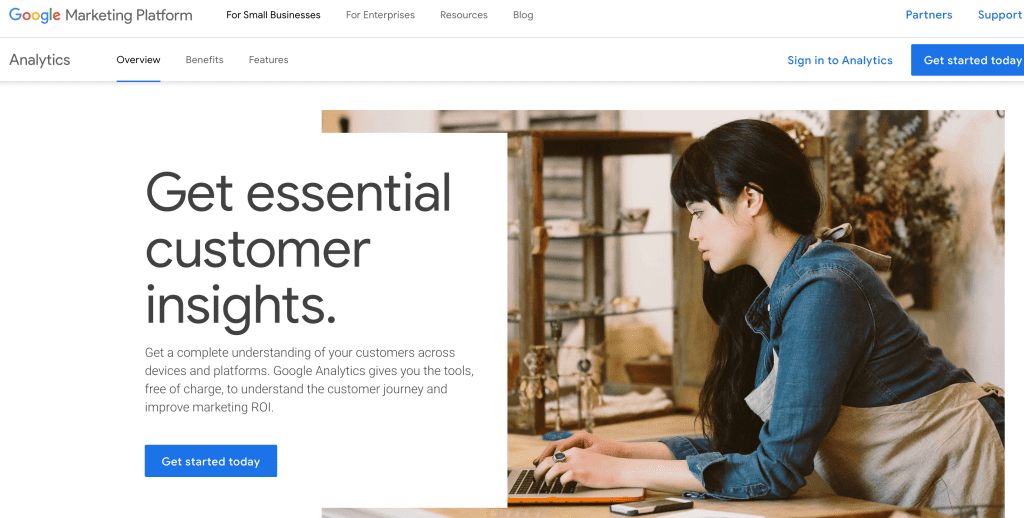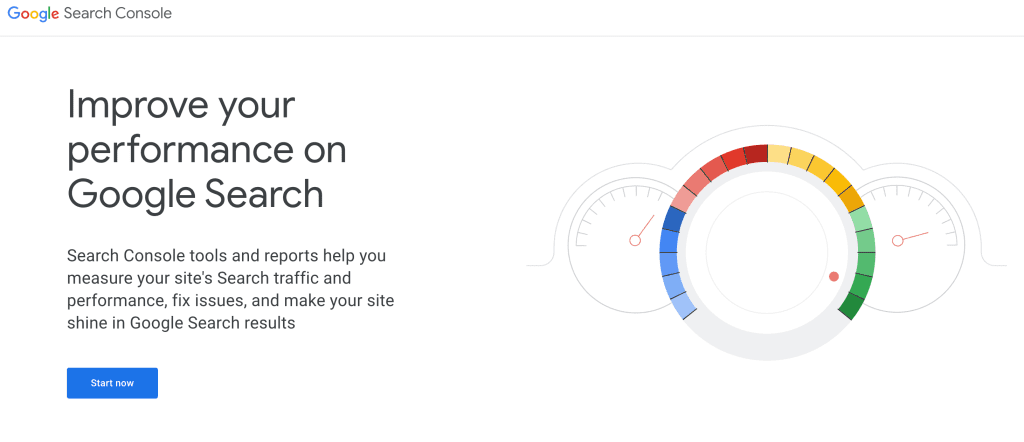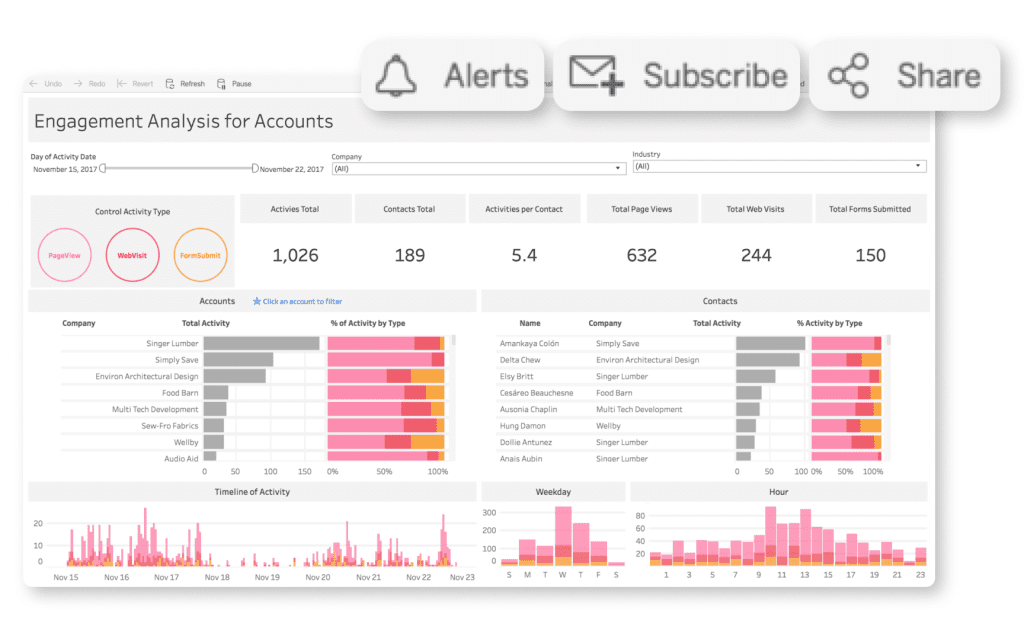Key Takeaways
- Strategic Foundations: Understand the importance of setting clear objectives and aligning them with business goals as the foundation for effective SEO reporting.
- Crafting a Narrative: Learn the art of transforming raw data into a compelling story, providing actionable insights and strategic recommendations for continuous improvement.
- Visual Impact: Harness the power of effective data visualization, incorporating infographics and interactive dashboards to enhance comprehension and engagement in SEO reports.
In the ever-evolving landscape of digital marketing, understanding and harnessing the power of Search Engine Optimization (SEO) is paramount for businesses aiming to thrive online.
SEO is not merely a set of strategies; it’s a dynamic ecosystem that demands continuous attention, adaptation, and, most importantly, measurement.
This brings us to the crux of our discussion: SEO reporting and the indispensable role it plays in deciphering the effectiveness of your digital efforts.
Imagine navigating a vast ocean without a compass or a map. In the digital realm, your website’s success is much like a ship’s journey—requiring direction, monitoring, and, above all, informed decision-making.
This is precisely where SEO reporting emerges as the navigational compass for your online presence.

Unraveling the Essence of SEO Reporting
SEO reporting, at its core, is the art and science of translating raw data into actionable insights.
It goes beyond the surface-level analytics, offering a panoramic view of your website’s performance on search engines.
It is the systematic process of collecting, analyzing, and presenting data that allows you to gauge the effectiveness of your SEO strategies.
Think of it as a mirror reflecting the strengths and weaknesses of your digital presence, enabling you to make informed decisions to optimize and enhance your online visibility.
The Building Blocks of SEO Reporting
To embark on this enlightening journey, it’s crucial to comprehend the key components that constitute a robust SEO report.
We’ll be delving into performance metrics that act as beacons, guiding you through the dense digital landscape.
From the organic traffic flowing into your site to the intricate dance of keywords and the web of backlinks supporting your online presence – each metric is a piece of the puzzle, and SEO reporting is the lens that brings them into focus.
Types of SEO Reports: Tailoring Insights to Your Needs
Not all SEO reports are created equal, and each serves a unique purpose in the grand tapestry of digital analytics.
We’ll explore monthly performance reports, providing an overview of key metrics and trends.
Additionally, we’ll delve into the realm of competitor analysis reports, a strategic tool for benchmarking your performance against industry peers.
Understanding these types of reports will empower you to tailor your approach and glean insights specific to your goals.
Crafting an Effective SEO Report: A Step-by-Step Guide
Armed with the knowledge of what constitutes an SEO report, we’ll embark on a detailed expedition into creating one.
Setting clear objectives, choosing the right tools, and navigating the sea of data – we’ll provide you with a step-by-step guide to transform raw information into a narrative that informs, inspires, and drives action.
Visualizing Data: The Art of Insightful Presentation
Data, when presented effectively, transcends mere numbers.
We’ll uncover the importance of data visualization in SEO reporting, exploring the impact of infographics and graphs in conveying complex information with clarity and impact.
As we unravel the visual language of data, you’ll gain a profound understanding of how to communicate insights with maximum efficacy.
Common Challenges in SEO Reporting: Navigating the Storms
No journey is without its challenges, and the realm of SEO reporting is no exception.
We’ll address common hurdles such as data accuracy and fluctuations in metrics, providing you with strategies to navigate these storms successfully.
Understanding these challenges is the first step toward overcoming them, ensuring that your reporting remains robust and reliable.
Best Practices: Sailing Smoothly in the Digital Waters
What sets apart a seasoned sailor from an amateur in the vast ocean?
It’s the adherence to best practices.
In this guide, we’ll uncover the best practices for SEO reporting, emphasizing regularity, consistency, client communication, and education.
By adopting these practices, you’ll not only enhance the accuracy of your reports but also foster a collaborative relationship with stakeholders.
But, before we venture further, we like to share who we are and what we do.
About AppLabx
From developing a solid marketing plan to creating compelling content, optimizing for search engines, leveraging social media, and utilizing paid advertising, AppLabx offers a comprehensive suite of digital marketing services designed to drive growth and profitability for your business.
AppLabx is well known for helping companies and startups use SEO to drive web traffic to their websites and web apps.
At AppLabx, we understand that no two businesses are alike. That’s why we take a personalized approach to every project, working closely with our clients to understand their unique needs and goals, and developing customized strategies to help them achieve success.
If you need a digital consultation, then send in an inquiry here.
What is SEO Reporting? And How to Build An SEO Report?
- Key Components of SEO Reporting
- Types of SEO Reports
- Building an Effective SEO Report
- Step-by-Step Guide to Creating an SEO Report
- Visualizing Data in SEO Reports
- Common Challenges in SEO Reporting
- Best Practices for SEO Reporting
1. Key Components of SEO Reporting
In the dynamic realm of SEO reporting, understanding the essential components is akin to wielding a powerful toolkit for navigating the digital landscape.

These key components serve as beacons, shedding light on the performance of your website and the effectiveness of your SEO strategies.
Let’s dive deep into each crucial facet:
Performance Metrics
- Organic Traffic
- Organic traffic is the lifeblood of any successful website, representing visitors who find your site through search engines. Tracking organic traffic provides insights into the reach and impact of your SEO efforts.
- Example: A study revealed that 53.3% of all website traffic comes from organic search, making it a predominant source of online traffic.
- Keyword Rankings
- Keywords are the building blocks of SEO, and monitoring their rankings is pivotal. It reflects how well your site is optimized for target keywords and indicates your visibility in search engine results.
- Example: Ahrefs and Semrush are popular tools for tracking keyword rankings, offering insights into keyword movements and fluctuations.
- Backlink Analysis
- Backlinks play a crucial role in SEO, influencing search engine rankings. Monitoring the quality and quantity of backlinks provides a holistic view of your site’s authority and trustworthiness.
- Example: Majestic and Moz are reputable tools for backlink analysis, offering metrics such as Domain Authority and Trust Flow to assess the strength of your backlink profile.
Website Analytics
- Google Analytics Overview
- Google Analytics is a cornerstone of website analytics, offering a wealth of data on user behaviour, acquisition sources, and conversion metrics. Understanding its features is fundamental to comprehensive SEO reporting.
- User Behavior Metrics
- Analyzing user behaviour metrics, such as bounce rate, average session duration, and pages per session, provides insights into how visitors interact with your site. This data aids in refining the user experience and content strategy.
- Example: According to a study, most users will leave a website within 10 to 20 seconds if they don’t find what they’re looking for, emphasizing the importance of engaging content to reduce bounce rates.
- Conversion Tracking
- Conversions are the ultimate goal of SEO efforts. Setting up conversion tracking allows you to attribute specific goals, such as form submissions or product purchases, to organic search traffic.
- Example: 36 per cent of B2B companies with a documented content marketing strategy considered themselves very effective, three times more than those without a documented strategy, underscoring the importance of aligning SEO efforts with conversion goals.

2. Types of SEO Reports
In the expansive landscape of SEO reporting, understanding the diverse types of reports is essential for tailoring insights to specific needs.
Each type serves a unique purpose, offering a nuanced view of your website’s performance and its standing in the digital domain.

Monthly Performance Reports
- Overview of Key Metrics
- Monthly performance reports provide a comprehensive snapshot of your website’s health. Key metrics include organic traffic trends, keyword rankings, and backlink performance over a specified period.
- Example: According to a study, companies that published 16+ blog posts per month got almost 3.5X more inbound traffic than companies that published between 0-4 monthly posts, highlighting the impact of content frequency on organic traffic.
- Trends and Patterns
- Uncovering trends and patterns in monthly reports is crucial for adapting your SEO strategy. Identifying seasonal fluctuations, emerging content trends, and user behaviour patterns empowers you to make data-driven decisions.
- Example: Google Trends is a valuable tool for identifying seasonality in search queries, helping you align your content strategy with user interests throughout the year.

Competitor Analysis Reports
- Identifying Competitors
- Competitor analysis reports focus on benchmarking your performance against industry peers. Identifying your main competitors in the digital space provides insights into their strategies and areas for improvement.
- Example: Semrush’s Competitor Analysis tool allows you to compare your website’s performance with up to five competitors, offering a comprehensive overview of keyword overlap, traffic sources, and backlink profiles.
- Benchmarking Performance
- Benchmarking against competitors is crucial for setting realistic goals and understanding your market position. Analyzing competitors’ strengths and weaknesses enables you to refine your SEO strategy for a competitive edge.
- Example: A study by Ahrefs found a strong correlation between the number of referring domains a web page has and its position in Google search results, highlighting the importance of backlink strategies in outperforming competitors.
3. Building an Effective SEO Report
Constructing an effective SEO report is akin to creating a roadmap that guides your digital journey.
It involves a meticulous process of setting clear objectives, choosing the right tools, and transforming raw data into a compelling narrative that informs strategic decisions.
In this section, we will delve into the intricacies of building an SEO report that not only reflects your website’s performance accurately but also empowers you to drive actionable outcomes.

Setting Clear Objectives
- Defining Goals and KPIs
- Before diving into data collection, it’s crucial to define clear goals and Key Performance Indicators (KPIs).
Whether the objective is to increase organic traffic, improve keyword rankings, or boost conversion rates, having specific, measurable goals sets the foundation for meaningful analysis. - Example: Marketers who have a marketing plan are more likely to report success over those who don’t by a whopping 429%, underscoring the importance of goal-setting in achieving digital success.
- Before diving into data collection, it’s crucial to define clear goals and Key Performance Indicators (KPIs).
- Aligning with Business Objectives
- SEO objectives should align seamlessly with broader business goals. Whether it’s enhancing brand visibility, increasing revenue, or expanding market share, every aspect of your SEO report should contribute to the overarching success of the business.
- Example: According to a study, 72% of consumers who perform a local search visit a store within 5 miles of their current location, emphasizing the impact of local SEO on driving physical foot traffic.
Choosing the Right Tools
- SEO Analytics Platforms
- Selecting the right SEO analytics platform is paramount for accurate data collection and analysis. Platforms like Google Analytics, Semrush, and Ahrefs offer comprehensive insights into organic traffic, keyword rankings, and backlink profiles.
- Data Visualization Tools
- Data visualization tools play a crucial role in transforming complex data into easily understandable insights. Platforms like Tableau, Google Data Studio, and Power BI allow you to create visually appealing reports that enhance comprehension.
4. Step-by-Step Guide to Creating an SEO Report
Building a comprehensive SEO report requires a systematic approach that transforms raw data into actionable insights.
This step-by-step guide outlines the key phases of creating an effective SEO report, from data gathering to structuring the document for maximum impact.

Gathering Data
Utilize SEO Tools for Precise Metrics
- Leverage tools like Google Analytics, Google Search Console, Semrush, and Ahrefs to gather precise metrics on organic traffic, keyword rankings, backlinks, and user behaviour.
- Example: Google Search Console provides valuable data on the performance of specific keywords, including impressions, clicks, and average position, allowing for a granular analysis of search visibility.

Ensure Data Accuracy and Consistency
Cross-reference data from multiple sources to ensure accuracy and consistency.
Discrepancies in data can lead to misinterpretations and misguided strategic decisions.
Structuring the Report
Introduction and Executive Summary
- Provide a succinct introduction that outlines the purpose and scope of the report. Follow this with an executive summary, summarizing key findings and recommendations for stakeholders who may not delve into the detailed analysis.
- Example: An executive summary should be concise, yet informative, and should give an overview of the prospectus, capturing the essence of the report in a format that is easily digestible for busy stakeholders.
Detailed Analysis of Key Metrics
- Organize the report into sections focusing on key metrics such as organic traffic, keyword performance, backlink analysis, and user behaviour. Include visualizations, graphs, and charts for a comprehensive and visually appealing presentation.
- Example: According to a study, the human brain processes images 60,000 times faster than text, emphasizing the impact of visual elements in facilitating quick comprehension of complex data.
Actionable Recommendations
Translate data insights into actionable recommendations.
Clearly outline steps that can be taken to address issues or capitalize on opportunities identified during the analysis.
5. Visualizing Data in SEO Reports
In the realm of SEO reporting, the art of visualizing data is akin to turning complex numbers into a compelling narrative.
Visual elements not only enhance the aesthetic appeal of reports but also play a pivotal role in conveying insights with clarity and impact.
This section delves into the importance of data visualization in SEO reports, exploring key strategies and leveraging relevant examples to illustrate its transformative power.

Importance of Data Visualization
Facilitating Quick Comprehension
- Visualizations such as charts, graphs, and infographics provide a rapid and intuitive understanding of data trends. This is crucial in a field like SEO, where insights need to be communicated swiftly to facilitate informed decision-making.
- Example: A study revealed that the human brain can process entire images that the eye sees for as little as 13 milliseconds, underlining the speed at which visuals aid comprehension.
Enhancing Engagement
- Visual elements not only make reports more engaging but also contribute to better information retention. Engaging visual content is more likely to capture the attention of stakeholders, ensuring that the key messages are communicated effectively.
- Example: According to a study, articles with images get 94% more views than their visual-lacking counterparts, emphasizing the role of visual content in enhancing audience engagement.
Utilize Infographics and Graphs
Conveying Trends and Patterns
- Infographics are powerful tools for summarizing complex data sets into visually appealing representations. Use infographics to convey trends, patterns, and relationships in data, providing stakeholders with a holistic view of your SEO performance.
- Example: Infographics are shared 3x more than any other visual content on social media, showcasing their effectiveness in capturing audience attention.
Presenting Keyword Performance
- Graphs and charts can effectively illustrate keyword performance over time. Whether showcasing the rise of high-performing keywords or identifying areas for improvement, visual representations add depth to the analysis.
- Example: Semrush’s Position Tracking tool provides visualizations of keyword ranking changes over time, enabling users to identify fluctuations and patterns with ease.
Interactive Dashboards for Dynamic Insights
Real-time Performance Monitoring
- Utilize interactive dashboards to provide real-time insights into SEO performance. These dashboards allow stakeholders to interact with data, enabling dynamic exploration of key metrics and facilitating on-the-fly analysis.
- Example: Looker Studio (previously Google Data Studio) enables the creation of interactive SEO dashboards, offering real-time data visualization for metrics such as organic traffic, conversion rates, and keyword rankings.

Customized Views for Diverse Audiences
- Tailor interactive dashboards to cater to diverse audiences within your organization. Customized views allow different stakeholders to focus on the metrics that are most relevant to their roles and responsibilities.
- Example: Data visualization tools like Tableau provide options to create customized views and share specific dashboards with different teams, ensuring that each stakeholder receives targeted insights.

Storytelling with Data
Creating a Narrative Flow
- Arrange visual elements in a way that tells a story. Whether it’s illustrating the impact of a successful SEO campaign or identifying areas for improvement, creating a narrative flow enhances the overall storytelling aspect of the report.
- Example: Neil Patel’s SEO Analyzer provides a visual representation of website SEO health, guiding users through different metrics in a step-by-step manner, and enhancing the narrative flow of the analysis.

Highlighting Key Takeaways
Use visualizations to highlight key takeaways and actionable insights.
Whether it’s a sudden spike in organic traffic or a decline in keyword rankings, visual elements draw attention to critical points within the data.
6. Common Challenges in SEO Reporting
Navigating the intricate landscape of SEO reporting comes with its share of challenges, each requiring strategic solutions for accurate measurement and meaningful interpretation of data.
This section sheds light on some prevalent challenges and provides insights into overcoming them.

Data Accuracy and Consistency
Discrepancies Across Analytics Platforms
- Different analytics platforms may provide varying data sets, leading to discrepancies. This challenge requires cross-referencing data from multiple sources to ensure accuracy and consistency.
- Example: Google Analytics and Search Console use different tracking methods.
Algorithm Updates Impacting Data Trends
- Search engine algorithm updates can impact data trends, causing sudden fluctuations in metrics. It’s crucial to differentiate between natural algorithmic changes and issues that require strategic adjustments.
- Example: Websites that offer better user experiences, as indicated by favourable Core Web Vitals scores, may see an improvement in their search engine rankings, emphasizing the need to understand the impact of algorithm changes on SEO metrics.
Interpreting Fluctuations in Metrics
Seasonal Variations in Traffic
- Seasonal changes can lead to fluctuations in organic traffic that may be misinterpreted as performance issues. Understanding industry-specific seasonality is essential for accurate analysis.
- Example: Retail websites often experience spikes in traffic during holiday seasons, which can be misconstrued as an abnormal increase if not considered within a seasonal context.
External Factors Influencing Metrics
- Metrics may be influenced by external factors such as economic trends, global events, or industry developments. Distinguishing between internal optimizations and external influences is crucial.
- Example: The COVID-19 pandemic significantly impacted online user behaviour, leading to shifts in search queries and consumer preferences that affected SEO metrics across various industries.
Reporting Metrics that Align with Business Objectives
Setting and Aligning Clear Objectives
Defining clear objectives and aligning them with broader business goals is often a challenge.
Metrics must be chosen strategically to reflect progress toward overarching objectives.
Demonstrating ROI from SEO Efforts
Quantifying the return on investment (ROI) from SEO efforts can be challenging, especially when attributing conversions and revenue to organic search.
Establishing clear attribution models is essential.
Evolving Search Engine Algorithms and Best Practices
Adapting to Algorithm Changes
- Search engines regularly update their algorithms, impacting ranking factors. Keeping abreast of these changes and adapting SEO strategies accordingly is a perpetual challenge.
- Example: In its early years, Google only made a handful of updates to its algorithms, requiring SEO professionals to stay informed and adjust strategies to align with new ranking signals.
Balancing SEO Best Practices
- Striking a balance between adhering to SEO best practices and adapting to unique industry or business needs can be challenging. Flexibility is essential without compromising the fundamentals.
- Example: While mobile-friendliness is a core SEO best practice, industries with specific user behaviours may need tailored approaches, highlighting the importance of adapting strategies based on unique contexts.
Demonstration of Progress to Stakeholders
Communicating Technical Insights to Non-Technical Stakeholders
Communicating technical SEO insights to non-technical stakeholders can pose a challenge.
Utilizing accessible language and visual aids can bridge the gap and facilitate comprehension.
Managing Expectations and Timelines
SEO is a long-term strategy, and results may not be immediate.
Managing stakeholder expectations and providing realistic timelines for achieving goals are ongoing challenges.
Continuous Education and Skill Development
Staying Updated with Industry Trends
The dynamic nature of the SEO landscape necessitates continuous education.
Staying updated with industry trends and emerging technologies is essential for effective SEO reporting.
Developing Cross-Disciplinary Skills
SEO professionals often need a diverse skill set that spans technical, analytical, and creative domains. Developing cross-disciplinary skills poses a challenge that requires ongoing learning.
7. Best Practices for SEO Reporting
Creating effective SEO reports requires a strategic approach that encompasses various best practices, from data presentation to communication with stakeholders.
This section outlines key practices that can enhance the accuracy, clarity, and impact of your SEO reporting efforts.

Regular and Consistent Reporting
Establishing Reporting Cadence
Define a regular reporting cadence that aligns with the needs of stakeholders.
Monthly reports are common, providing a balance between tracking short-term changes and capturing long-term trends.
Consistency in Metrics and Format
Maintain consistency in the metrics tracked and the format of the report.
Consistency fosters familiarity among stakeholders, allowing for easier interpretation and comparison of data over time.
Clear Communication of Objectives and KPIs
Define Clear Objectives
- Clearly define the objectives of your SEO efforts. Whether it’s increasing organic traffic, improving keyword rankings, or enhancing user engagement, aligning objectives with business goals is pivotal.
- Example: A study found that 61% of companies that are good at content marketing have a documented content marketing strategy, underscoring the importance of clear objectives.
Choose Relevant KPIs
- Select Key Performance Indicators (KPIs) that directly align with your defined objectives. Tailoring KPIs to your specific goals ensures that the metrics tracked are meaningful and indicative of success.
- Example: Organic search traffic is the most widely used metric for gauging content success, tracked by over 50% of marketers, emphasizing the significance of organic traffic as a key KPI.
Visualizing Data Effectively
Utilize Infographics and Graphs
- Incorporate infographics, charts, and graphs to visualize data effectively. These visual elements enhance comprehension and engagement, making it easier for stakeholders to grasp complex information.
- Example: Data visualization is a valuable tool for content marketers who are looking to improve their search engine rankings and attract more links to their content, resulting in enhanced understanding and collaboration.
Interactive Dashboards for Dynamic Insights
- Implement interactive dashboards that allow stakeholders to explore data dynamically. Interactive features enhance engagement and provide a customizable experience for different user groups.
- Example: Google Data Studio enables the creation of interactive dashboards, providing stakeholders with real-time access to dynamic SEO insights that can be tailored to their specific needs.
Focus on Actionable Insights
Translate Data into Actionable Recommendations
Transform data insights into actionable recommendations. Whether it’s optimizing underperforming keywords, addressing technical issues, or refining content strategies, actionable insights drive strategic improvements.
Prioritize High-Impact Changes
Prioritize actionable recommendations based on their potential impact. Focusing on high-impact changes ensures that resources are allocated efficiently and efforts yield significant results
Client Education and Communication
Educate Clients on SEO Fundamentals
- Provide clients with basic SEO education to foster a deeper understanding of the metrics and strategies presented in the report. Educated clients are more likely to appreciate the value of SEO efforts.
- Example: Neil Patel’s SEO Analyzer includes educational elements within the tool, providing users with explanations and insights to enhance their understanding of SEO metrics.
Clear and Transparent Communication
- Foster clear and transparent communication with clients or internal stakeholders. Clearly explain the methodologies used, the significance of metrics, and the rationale behind recommendations.
- Example: Transparent communication plays a vital role in this process, fostering trust, collaboration, and innovation within organizations, resulting in more collaborative and successful SEO strategies.
Continuous Learning and Adaptation
Stay Updated with Industry Trends
Foster a culture of continuous learning within your SEO team. Stay updated with industry trends, algorithm changes, and emerging technologies to adapt strategies proactively.
Regularly Update Reporting Strategies
- Regularly assess and update your reporting strategies to align with evolving industry standards and stakeholder needs. This ensures that your SEO reports remain relevant and valuable over time.
- Example: The adoption of mobile-first indexing by Google prompted SEO professionals to update their reporting strategies to emphasize mobile performance metrics.
Conclusion
In the ever-evolving realm of digital landscapes, SEO reporting emerges as a compass guiding businesses through the intricate maze of online visibility and performance.
This comprehensive exploration into “What is SEO Reporting? And How to Build An SEO Report?” has unveiled the critical role that insightful reporting plays in the success of digital strategies.
As we conclude this journey, let’s distil the key takeaways and chart a course for the future of SEO reporting.
Unlocking the Power of SEO Reporting
In essence, SEO reporting serves as the proverbial map that navigates businesses through the vast territories of the online world.
It goes beyond mere data compilation, evolving into a dynamic tool that empowers stakeholders with actionable insights, strategic clarity, and a profound understanding of a website’s digital footprint.
Foundations of Effective SEO Reporting
The journey begins with understanding the foundational elements of SEO reporting. From defining clear objectives and aligning them with business goals to choosing the right metrics and tools, the importance of a well-structured approach cannot be overstated.
The power lies in the details, and meticulous data gathering sets the stage for informed decision-making.
Types of SEO Reports: A Panoramic View
Diving into the intricate nuances, we explored the diverse types of SEO reports, each offering a unique lens into a website’s performance.
From monthly performance reports unravelling trends and patterns to competitor analysis reports benchmarking against industry peers, the richness of insights derived from these reports lays the groundwork for strategic refinement.
Building an Effective SEO Report: A Crafted Narrative
Constructing an effective SEO report transcends data presentation; it’s an art form that involves setting clear objectives, choosing the right tools, and translating raw data into a crafted narrative.
The step-by-step guide unveiled the secrets behind transforming numbers into a compelling story, guiding businesses to actionable recommendations and strategic improvements.
Visualizing Data: The Language of Impact
In the age of information overload, the section on visualizing data emphasized the power of infographics, graphs, and interactive dashboards.
These visual elements not only enhance comprehension but also elevate the impact of SEO reports, turning complex data into an accessible and engaging narrative.
Challenges in SEO Reporting: Navigating Complexity
Acknowledging the challenges in SEO reporting is the first step toward overcoming them.
From ensuring data accuracy and adapting to evolving algorithms to communicating technical insights and managing client expectations, a strategic mindset is crucial for navigating the complexities and delivering impactful reports.
Best Practices: Sculpting Excellence in Reporting
The journey through best practices unveiled the keys to excellence in SEO reporting.
Regular and consistent reporting, clear communication of objectives and KPIs, effective data visualization, a focus on actionable insights, client education, and a commitment to continuous learning constitute the pillars of successful reporting strategies.
Looking Ahead: Emerging Trends in SEO Reporting
As we gaze into the future, the landscape of SEO reporting continues to evolve.
From the integration of artificial intelligence for predictive analytics to a heightened emphasis on user experience metrics, the emerging trends promise to reshape the way businesses measure and optimize their online presence.
In conclusion, the world of SEO reporting is a dynamic ecosystem where data transforms into actionable intelligence, and insights pave the way for strategic triumphs.
Armed with the knowledge garnered from this exploration, businesses can embark on a journey of digital success, navigating the ever-changing currents of the online landscape with confidence and precision.
SEO reporting isn’t just about numbers; it’s the language of progress, the narrative of growth, and the key to unlocking the full potential of a digital presence.
As the digital horizon continues to expand, may your SEO reports be the guiding star that illuminates the path to enduring success in the ever-evolving world of online prominence.
If you are looking for a top-class digital marketer, then book a free consultation slot here.
If you find this article useful, why not share it with your friends and business partners, and also leave a nice comment below?
We, at the AppLabx Research Team, strive to bring the latest and most meaningful data, guides, and statistics to your doorstep.
To get access to top-quality guides, click over to the AppLabx Blog.
People also ask
What is SEO reporting?
SEO reporting is the process of analyzing and presenting data related to a website’s search engine performance. It involves tracking key metrics, such as organic traffic, keyword rankings, and user behaviour, to provide insights that inform strategic decisions and optimizations for improved online visibility and performance.
How do I create an SEO report on my page?
To create an SEO report for your page, use analytics tools like Google Analytics and Google Search Console. Track key metrics such as organic traffic, keyword rankings, and user engagement. Present findings in a clear format, emphasizing actionable insights for strategic improvements.
How to build an SEO?
To build SEO, focus on keyword research, optimize on-page elements, create high-quality content, improve website speed, build quality backlinks, and ensure mobile-friendliness. Regularly monitor performance using analytics tools and adapt strategies based on evolving search engine algorithms.




































